.
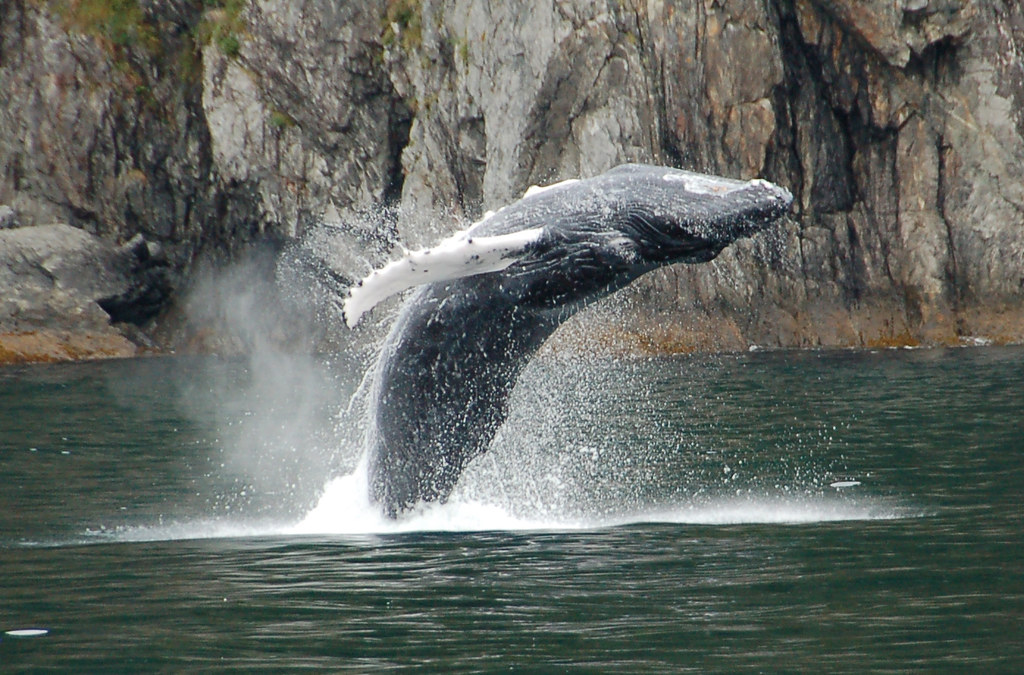
Humpback Whale breaching, Kenal Fjords National Park, Alaska: photo by jdegenhardt, 3 September 2009
This being the spring season, San Pedro, as well as all the other open ports upon the coast, was filled with whales, that had come in to make their annual visit upon soundings. For the first few days that we were here and at Santa Barbara, we watched them with great interest -- calling out “there she blows!” every time we saw the spout of one breaking the surface of the water; but they soon became so common that we took little notice of them. They often “broke” very near us; and one thick, foggy night, during a dead calm, while I was standing anchor-watch, one of them rose so near, that he struck our cable, and made all surge again. He did not seem to like the encounter much himself, for he sheered off, and spouted at a good distance. We once came very near running one down in the gig, and should probably have been knocked to pieces and blown sky-high. We had been on board the little Spanish brig, and were returning, stretching out well at our oars, the little boat going like a swallow; our backs were forward (as is always the case in pulling), and the captain, who was steering, was not looking ahead, when, all at once, we heard the spout of a whale directly ahead. “Back water! back water, for your lives!” shouted the captain; and we backed our blades in the water and brought the boat to in a smother of foam. Turning our heads, we saw a great, rough, hump-backed whale, slowly crossing our fore foot, within three or four yards of the boat’s stem. Had we not backed water just as we did, we should inevitably have gone smash upon him, striking him with our stem just about amidships. He took no notice of us, but passed slowly on, and dived a few yards beyond us, throwing his tail high in the air. He was so near that we had a perfect view of him and as may be supposed, had no desire to see him nearer. He was a disgusting creature; with a skin rough, hairy, and of an iron-grey color. This kind differs much from the sperm, in color and skin, and is said to be fiercer. We saw a few sperm whales; but most of the whales that come upon the coast are fin-backs, hump-backs, and right-whales, which are more difficult to take, and are said not to give oil enough to pay for the trouble. For this reason whale-ships do not come upon the coast after them. Our captain, together with Captain Nye of the Loriotte, who had been in a whale-ship, thought of making an attempt upon one of them with two boats’ crews, but as we had only two harpoons and no proper lines, they gave it up.
Richard Henry Dana, Jr.: from Chapter XVIII in Two Years Before the Mast (1840)
Humpback Whale flukes. Taken off Surfer's Paradise, Queensland during the annual northerly migration from the Antarctic to the warmer waters of the Coral Sea: photo by Terry Howard, June 2005

Humpback Whale (Megaptera novaeangliae), two blowholes clearly visible, St. Mary's Ecological Reserve, Newfoundland and Labrador: photo by D. Gordon E. Robertson, 29 June 2010

Humpback Whale breaching, Stellwagen Bank National Marine Sanctuary, off Scituate, Massachsetts. Humpbacks frequently breach, throwing two-thirds or more of their bodies out of the water and splashing down on their backs: photo by Whit Welles, 20 August 2007

Humpback Whale breaching, Abrolhos Archipelago, Porto Seguro, Bahia, Brazil: photo by Amnemona (Marina C. Vinhal), 25 August 2007
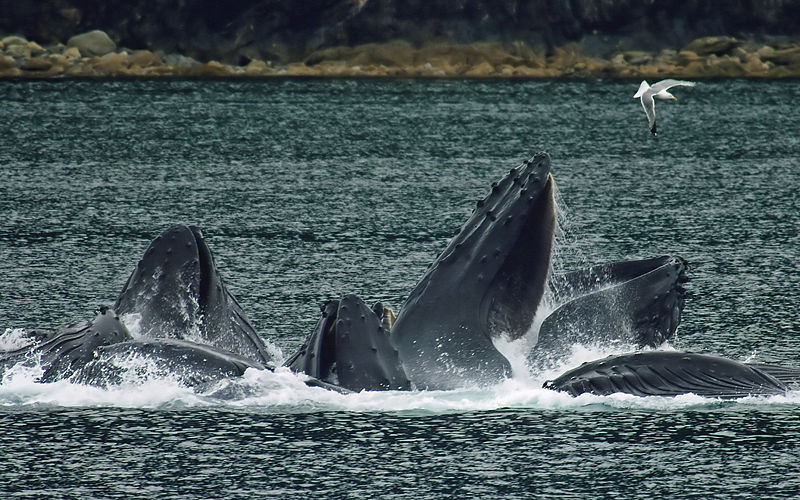
Humpback Whales in North Pass between Lincoln Island and Shelter Island in the Lynn Canal north of Juneau, Alaska. This is a group of 15 whales that were engaged in cooperative "bubble net" fishing: photo by Evadb, 18 August 2007; image by Jjron, 22 September 2007

A whale is captured by the Yushin Maru, a Japanese harpoon vessel. This image was taken by Australian customs agents in 2008, under a surveillance effort to collect evidence of indiscriminate harvesting, which is contrary to Japan's claim that they are collecting the whales for the purpose of scientific research. In 2010, Australia filed a lawsuit in the International Court of Justice hoping to halt Japanese whaling; this photograph will undoubtedly play a key role in that pending case: photo by Customs and Border Protection Service, Commonwealth of Australia, 6 February 2008

A harpooned Minke whale is captured by the Yushin Maru, a Japanese harpoon vessel: photo by Customs and Border Protection Service, Commonwealth of Australia, 6 February 2008
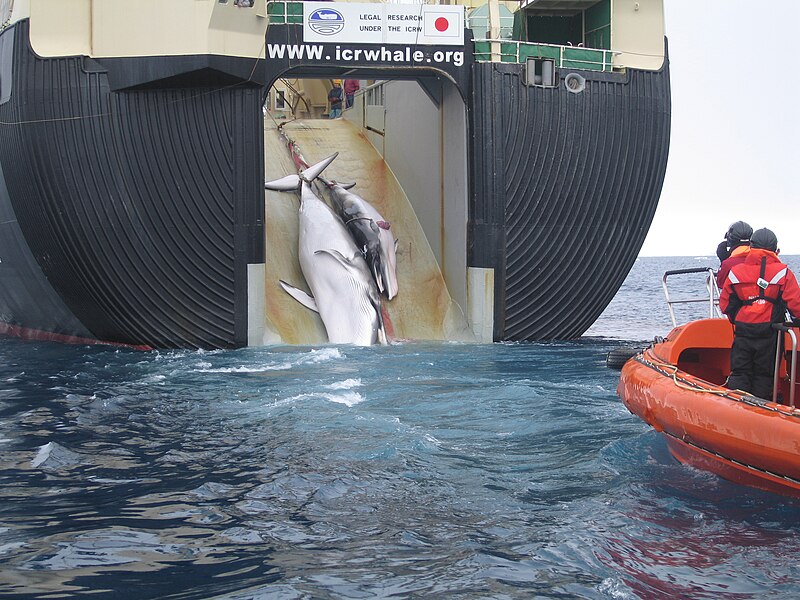
A Minke whale and her 1-year-old calf are dragged aboard the Nisshin Maru, a Japanese whaling vessel that is the world's only whaling factory ship. The wound that is visible on the calf's side was reportedly caused by an explosive-packed harpoon. The sign above the slipway reads, "Legal research under the ICRW". Australia released this photo to challenge that claim: photo by Customs and Border Protection Service, Commonwealth of Australia, 6 February 2008
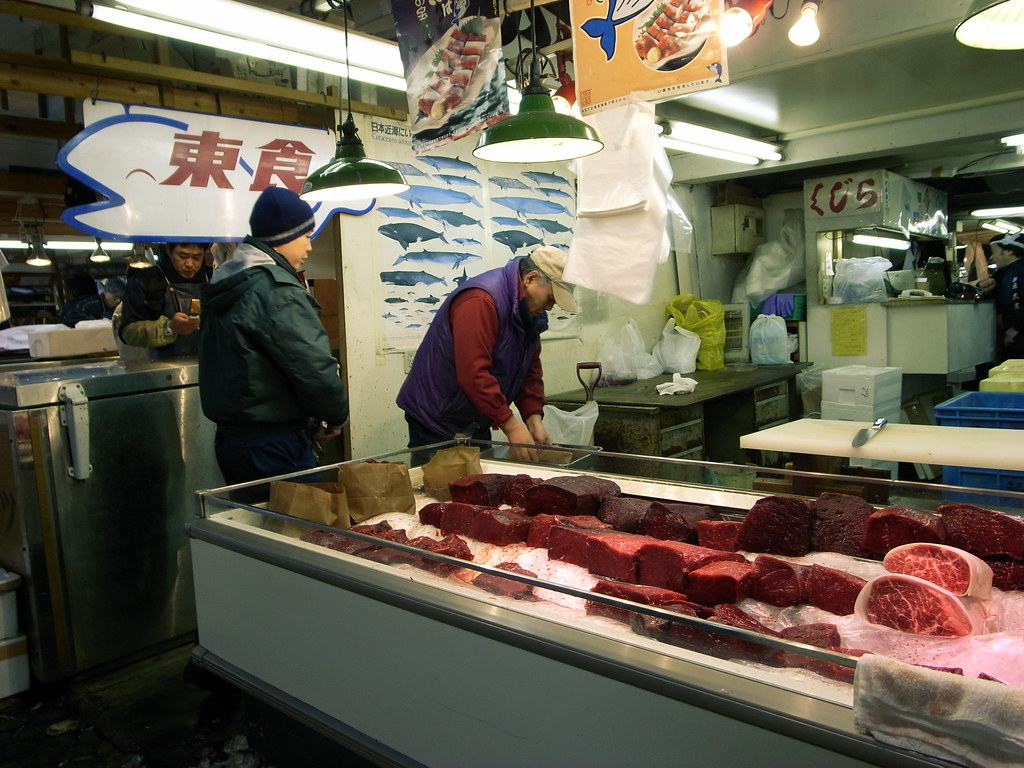
Save On Whale: whale meat on sale at the Tsukiji fish market, Tokyo: photo by spDuchamp, 4 February 2008
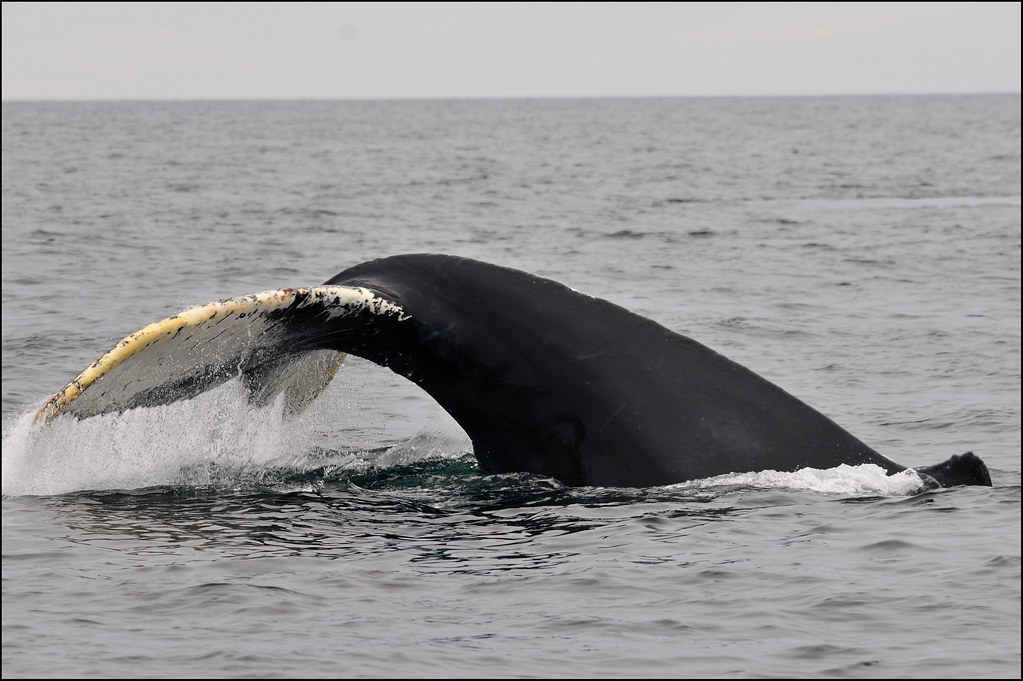
Humpback Whale submerging, off St. Anthony, Newfoundland: photo by Zircon_215, 3 August 2010
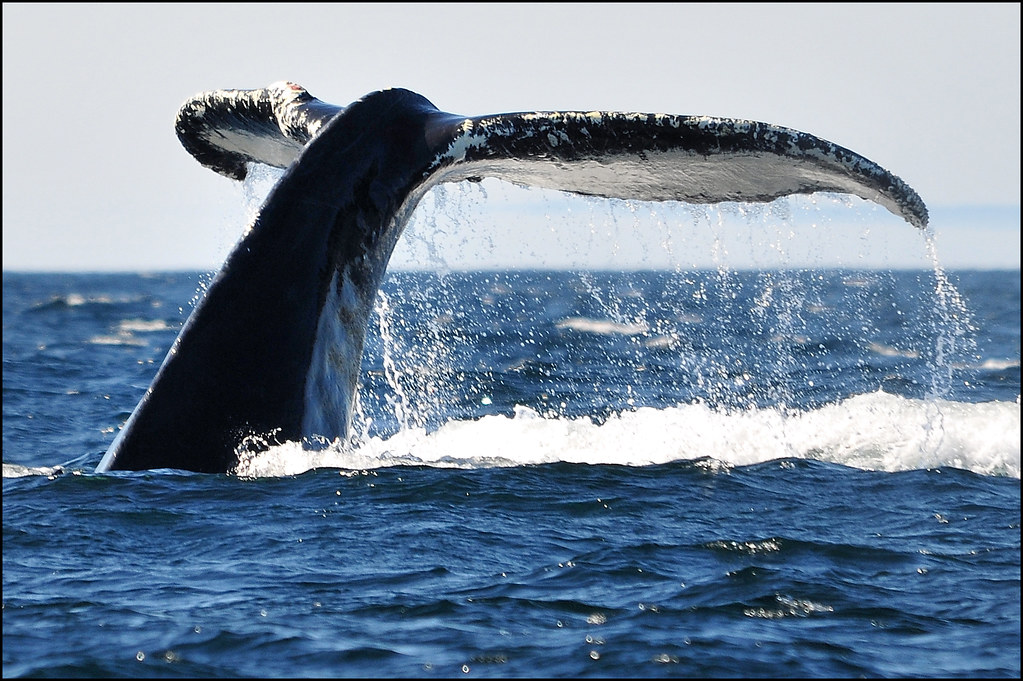
Humpback Whale tail, off St. Anthony, Newfoundland: photo by Zircon_215, 3 August 2010

Humpback Whales, Tonga: photo by melissa fiene, 3 August 2010

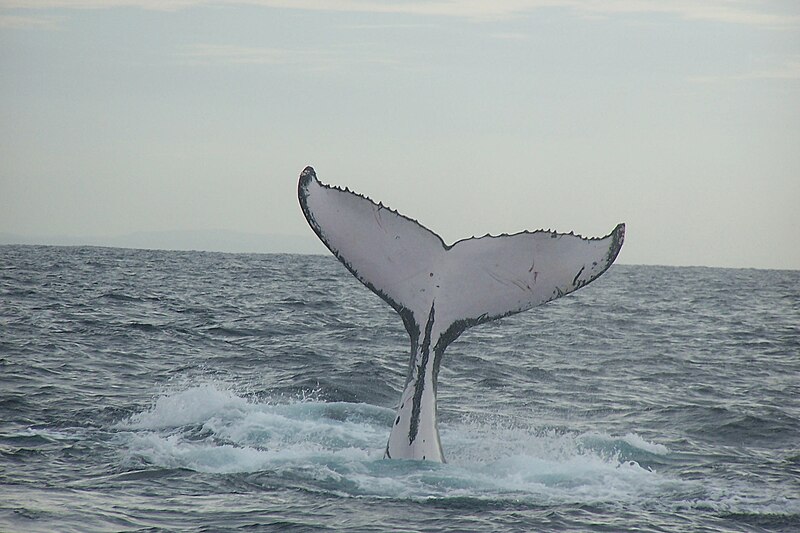
No comments:
Post a Comment